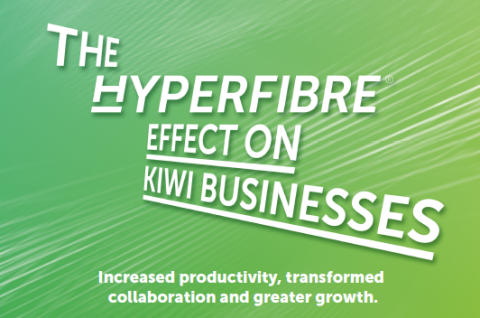Fibre now connection of choice for Kiwis
Recent figures released by Chorus show 2019 was the year that fibre became the connection of choice for Kiwis with 56 percent of homes and businesses able to connect to our world-class fibre network now doing so.
Chorus connected more than 160,000 homes and businesses to fibre last year. Nearly three quarters of installations are now done within a single visit from a technician, making for a quick and convenient customer experience. For more complex installations such as those involving rough terrain, long distances or needing traffic management plans, two visits might be necessary.
The company has also shed some light on Kiwis’ online habits, showing the busiest days for surfing the net, as well as the cities consuming the most data and those enjoying the fastest speeds.
The busiest time of the year on the Chorus network was on 20 October at 9.05pm during the Rugby World Cup quarter final, Wales vs France. During that time, 2.6 Terabits per second (Tbps) was being used on the Chorus network, a 37 percent increase on the peak seen in 2018.
Porirua claimed the title for the most data used in December, with the average household using about 360GB during the month, an increase of around 33 percent on the same period in 2018. Auckland and Gisborne came in second place with an average of 336GB each.
Overall, the average New Zealand household used 293GB of data in December on the Chorus network, an increase of 25 percent on December 2018.
In terms of fast fixed-line broadband, not surprisingly, Dunedin was out in front continuing to make the most of winning Chorus’ Gigatown competition, with an average connection speed of 351Mbps. Wellington (181Mbps) and Lower Hutt (171Mbps) rounded out the top three places in New Zealand with the fastest broadband on the Chorus network.
Nationwide, the average connection speed on Chorus’ network in December was 140.9Mbps, up 46 percent on the same time period the previous year.
Chorus Network Strategy Manager Kurt Rodgers says a big driver of data use in 2019 was streaming becoming the norm and says 4k content will become more commonplace this year, driving competition between providers.
“Streaming has become so mainstream nowadays that there are now almost too many providers which becomes confusing for consumers.
“4k will be the differentiating factors as quality, not just content, becomes king. For example, Disney Plus doesn’t charge extra for 4k, it’s just expected,” he says.
Mr Rodgers says Wi-Fi 6, a significant upgrade on previous Wi-Fi standards, will also become commonplace in the home in 2020.
Every five years or so a new generation of Wi-Fi technology comes along to meet the growing demand for faster speeds, more capacity and better overall performance. Wi-Fi 6, also known as 802.11ax, will be the best option for indoor networks that need to support lots of devices.
Mr Rodgers says: “Wi-Fi 6 launched last year but now all new devices will be Wi-Fi 6 enabled.
“It is a significant upgrade. It provides faster speeds, lower latency, better coverage, extends battery life by using less power and massively improves performance in crowded areas which is great as people add more smart devices to their homes.”
And also becoming the norm in 2020 says Mr Rodgers, will be Gigabit plans. In 2019 demand for the Gig almost doubled.
Chorus network statistics for 2019
Top three busiest times for broadband usage in 2019
9.05pm, 20 October
2.6Tbps (the Rugby World Cup quarter final, Wales vs France)
9.30pm, 19 October
2.52Tbps (the Rugby World Cup quarter final, England vs Australia)
9.30pm, 15 October
2.47Tbps (coinciding with Fortnite update, chapter two)
Top five cities for highest data use per household
| City | Monthly data usage for December | Increase since December 2018 |
| Porirua | 360GB | 33.3% |
| Auckland | 336GB | 24.6% |
| Gisborne | 336GB | 35.1% |
| Rotorua | 333GB | 27.9% |
| Upper Hutt | 332GB | 35.1% |
Top five cities for download speeds
| City | Download | Increase since December 2018 |
| Dunedin | 351Mbps | 1% |
| Wellington | 181Mbps | 66.1% |
| Lower Hutt | 171Mbps | 67.65% |
| Porirua | 169Mbps | 72.5% |
| Auckland | 169Mbps | 62.5% |



